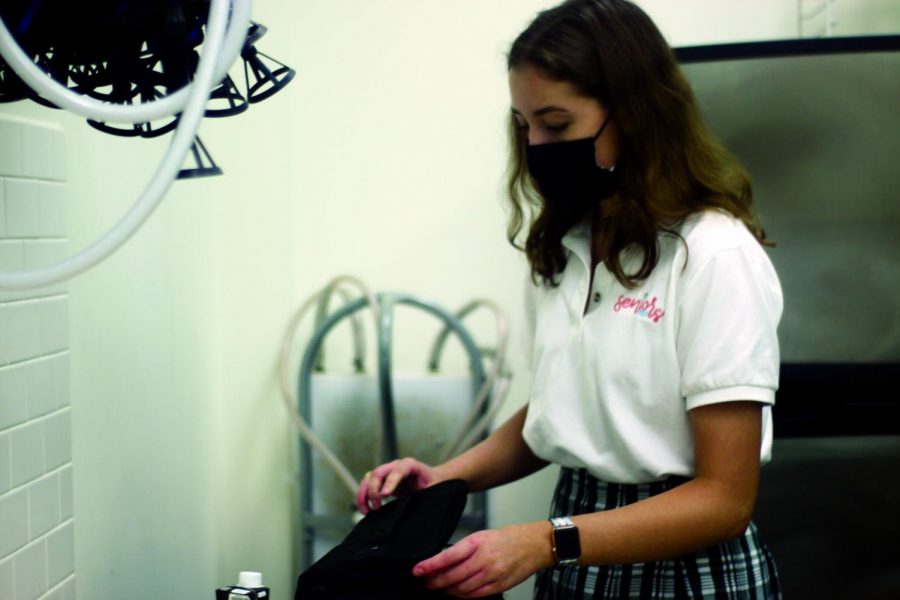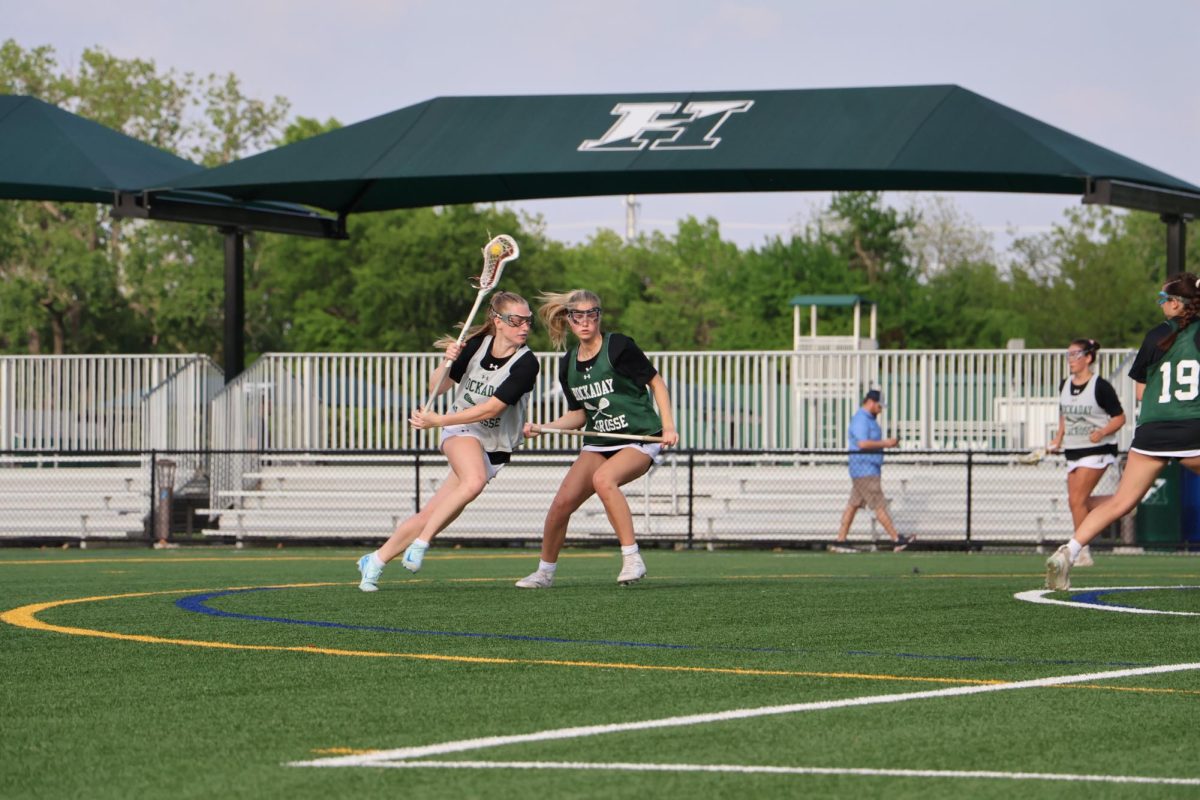Training Re-imagined
Revised program extends to all sports.
Trainer Kate Borson prepares to perform an ultrasound on a student with deep tissue pain.
October 12, 2021
The humming of the ice maker. The low rumble of the washing machine. The thumping of shoes as they cross the tiled floor. The occasional beeping of the ultrasound machine. These sounds of the training room are deeply familiar to the members of the athletic training program.
Coach Jeff Geier, Director of Sports Performance and Medicine, has recently made several changes to the training program. This year, Geier was able to expand the program and recruit more trainers than in past years due to a greater need for them, as teams resumed a more normal, post- COVID schedule.
Another change is how the trainers now work with each sports’ team. “I am assigning them in groups of three to specific sports, where they will stay for three or four weeks and then rotate to another sport,” Geier said.
While assigned to a sport, the athletic trainers will attend that sport’s
practices and games. This change was made as an effort “to build connections with the teams so they recognize us and feel more comfortable visiting us if they need to,” Kate Borson, a senior and one of the athletic trainers, said.
The trainers’ presence at practices and games has not gone unnoticed by fall athletes. “The trainers come down and hand out ice or send us up to the training room if we need it,” cross country runner Jada Beard said.
Looking forward, Geier wants to include more day-to-day learning opportunities in the program, including homework, quizzes, and demonstrations. “For example,” Geier said, “if someone comes in with a sprained ankle I can say ‘Okay, everybody come gather around and watch this’ and then they can see what I’m doing and practice doing it themselves.”
Amidst these changes, the athletic trainers still have many of the same responsibilities of years past. These responsibilities include equipping Coach Geier’s golf cart with medical supplies; making sures the kits are stocked; providing towels or bags of ice; wrapping injuries; occasionally performing ultrasounds; and, of course, bringing the coveted, ice-cold water to games.
The athletic training program has provided unique opportunities for those involved. “I really enjoy getting to still be a part of the athletic community and have my fellow classmates, who are on sports teams, come in and I am able to help them,” Borson said.





